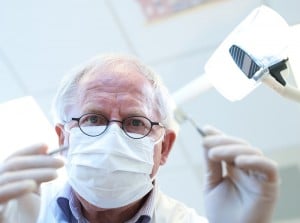Is it Safe to Visit the Dentist?
How safe is your visit to the dentist? In light of the recent Tulsa, Oklahoma case of Dr. W. Scott Harrington, who is accused of potentially exposing over 7,000 patients to Hepatitis and HIV, many are left wondering ’Is it safe to visit the dentist?’
According to Tulsa World, Dr. Harrington, an oral surgeon and longtime native of Tulsa, has been indicted on charges of using rusty and unclean instruments on patients, at least one of whom has become ill. Inspectors reported that instruments were not sterilized properly, the autoclave (sterilization machine) had not been inspected regularly as required and drugs used in his office were outdated.
How could this happen? While the facts of this pending case have yet to be discovered, the thought that any medical practitioner could be so careless is mystifying and invokes fear and anger. Tulsa public health officials are now providing free testing to anyone who visited the well-known dental surgeon.
The fact is, working on teeth means contact with saliva and sometimes blood. This creates a risk of transmitting diseases such as Hepatitis, HIV, Herpes viruses, influenza and even the common cold. In the past 25 years, significant changes have taken place that help minimize the exposure to patients as well as medical personnel. Here are just a few of the rules your Dentist must follow:
- Gloves. Exam or surgical (depending on the procedure) gloves must be worn. They must be changed between patients.
- Masks and eye protection are required to be worn by all dental staff when there is a risk of aerosol spray, splash, or spatter.
- Disposable gowns are used whenever there is a risk of fluid spatter. Typically, oral surgeons, due to the nature of their procedures, use disposable gowns. In most dental practices, reusable, laundered gowns are considered perfectly acceptable by Cal-OSHA Bloodborne Pathogens Standards.
- Hand washing and sanitizing is required at the beginning of each day and if they become visibly soiled. Either hand washing or the use of an alcohol-based sanitizer must be used between patients.
- Equipment that is reused (such as drills, scalers, etc.) must be sterilized at high temperatures. An Autoclave (steam under pressure) is used for this purpose. Other methods for sterilization include dry heat or chemical vapor, both of which are as effective as an Autoclave. Sterilization equipment must be inspected regularly to ensure it is in proper working order.
- Irrigants used in procedures must be delivered using a sterile delivery system.
- Needles are one-use only and must be disposed of properly in a dedicated container designed for that purpose.
- Equipment that cannot be heat-sterilized must be wiped down after each patient with a sanitizer that kills bacteria, viruses, and spores.
- Floors, walls and sinks must be disinfected with a hospital-grade disinfectant.
- Patients with a cold or flu are asked to reschedule.
- A written protocol is required for dental offices.
- Regular training is required of licensed dental personnel.
Sources:
The Academy of General Dentistry
Dental Board of California – Infection Control Regulations
Section 1005 – Minimum Standards for Infection Control
What can you do?
- Talk with your dentist. Ask questions. Any reputable dentist will be happy to tell you about her safety program, training and procedures.
- Take a good look at the office and treatment rooms. Are they clean and free of clutter? Does it appear that the surfaces are wiped down regularly?
- You should see soap containers and disposable glove dispensers in many places.
- What does your dentist touch while wearing the protective gloves? It should only be your mouth or the sterile instruments.
- Is the Autoclave (sterilization machine) or other sterilization equipment tested on a regular basis? Biological monitoring is done by a third party using ‘test packets’ which are processed in the Autoclave and sent to an independent laboratory.
- Instruments used should come out of a sealed bag, which indicates they were sterilized. They should be placed on a clean tray prior to use.
- You can check the status of a dental license and any recorded infractions by visiting – the California Department of Consumer Affairs governs the California Dental Board. They offer the consumer information and resources to help you make sound decisions for yourself and your family.
Putting it in perspective. Incidents such as the one in Tulsa, though egregious, are very uncommon. Fortunately, California has some of the strictest rules of all states regarding blood borne pathogen prevention.
Dentists and doctors have specific guidelines to ensure proper sterilization procedures are followed. Protecting patients and staff are always at the forefront of any medical practitioner’s mind.
Cross-contamination is extremely rare. The vast majority of dental professionals are conscientious and responsible individuals. In fact, there is a greater danger to your health or that of your child from untreated dental issues than there is from the risk of cross-contamination. Is it safe to visit the dentist? The answer, thankfully, is almost always yes.
Caring Tree Children’s Dentistry and Dr. K welcome your questions about our exemplary training and safety procedures – don’t be afraid to ask!














